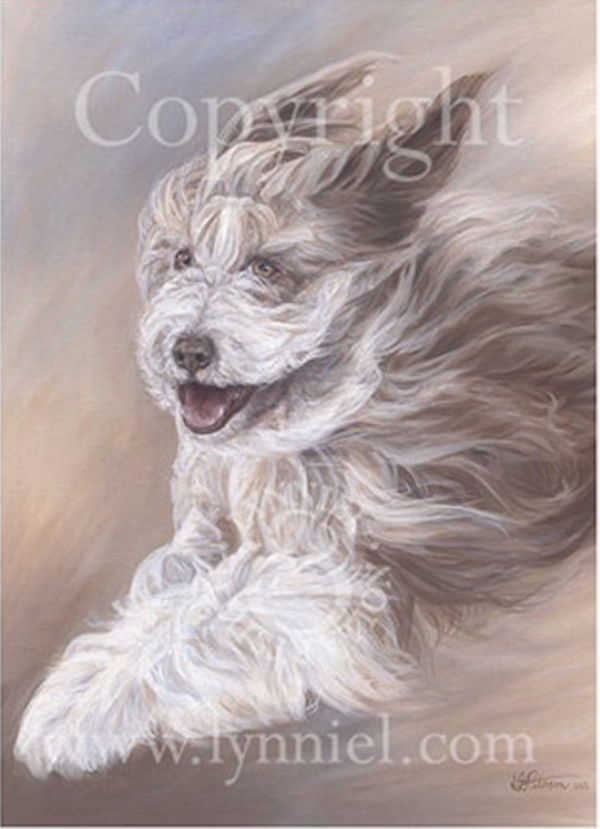
Remembering proper pigmentation in a Bearded Collie is easy: Pigmentation follows coat color.
In a Beardie puppy born black (which most are because black is the predominant coat color in the breed), the nose, eye rims and lips are black, but if the puppy is born “blue,” the aforementioned areas are blue gray. A brown puppy has brown pigmentation, and if the puppy is a lighter brown, or fawn, its nose, lips and eye rims are also lighter brown.
Since Beardies are born dark, how is one to know? Experienced breeders know that as a puppy grows, he or she will “gray out” or lighten from the color they were at birth. A puppy born a black may be silver when he’s a year old. That Hershey’s chocolate brown pup may turn cream or champagne colored. Pigmentation in the blues will be lighter and/or “duller” than in black youngsters, but even black pups that fade to a slate (gray) color will have darker pigmentation than the dilute blue Bearded Collie.
Perhaps the one part of the breed standard that may seem open to interpretation has to do with the phrase, “eye color will generally tone with the coat color.” A rule of thumb is that the lighter the coat color, the lighter the shade of the eyes. In some breeds, the darker the pigmentation, the better, but in the Bearded Collie, eyes will generally tone with the coat color, and a distinctively lighter eye color in a blue or fawn Beardie is perfectly correct, even in a show ring. It’s no more correct for a dark black Beardie to have amber colored eyes than it is for a fawn to have deep brown eyes.
To our knowledge, the Beardie is not the only breed in which pigmentation follows coat color. The Spinone Italiano AKC standard also states that pigmentation is dependent upon the color or markings of the dog’s coat, and in the Neapolitan Mastiff, pigmentation of the eye rims are the same as the coat color. In the Cane Corso, eye rim pigmentation must match the pigment color of the dog, and Dogues de Bordeaux with brown masks should have noses and eye rims that are also brown. If the Dogue is fawn colored, then its skin appears red and the nose, pink or reddish or pink.
Bottom line: Deep dark pigmentation is not always correct for every breed.
The Bearded Collie Club of America has a marvelous “show and tell” page on color in the breed which you can see here.
Image: “Fawn Beardie Running” by Lynn Paterson appears with consent
http://www.lynniel.com
www.etsy.com/shop/Lynniel
